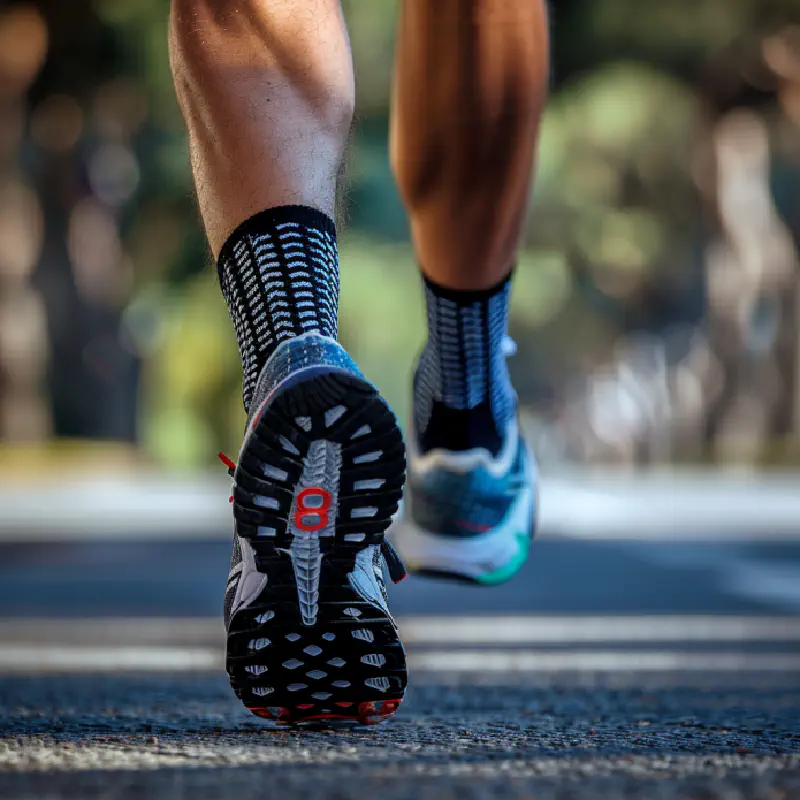Choosing the Best Running Socks for Comfort and Blister Prevention
Introduction
As a running coach, I’ve seen firsthand how the right pair of socks can make all the difference in a runner’s comfort and performance. Choosing the appropriate running socks is often overlooked, but it’s a crucial component of a runner’s gear. Improper sock selection can lead to a variety of problems, from blisters and hot spots to moisture buildup and discomfort. In this article, we’ll explore the key factors to consider when selecting the best running socks for your needs.
Factors to Consider When Choosing Running Socks
Material: The fabric of your running socks plays a significant role in their performance. Look for socks made from moisture-wicking, breathable materials like synthetic fibers or merino wool. These fabrics will help keep your feet dry and comfortable, even during the most intense workouts.
Fit: A well-fitting sock is essential for preventing blisters and hot spots. The sock should be snug but not too tight, allowing for a bit of stretch and movement without bunching or sliding. Pay attention to the heel, arch, and toe box to ensure a secure, customized fit.
Cushioning: The amount of cushioning in your running socks can provide valuable support and shock absorption, reducing the impact on your feet and joints. Consider your running surface, mileage, and personal preferences when choosing the right level of cushioning.
Height: Running socks come in a variety of heights, from ankle-length to over-the-calf. The height you choose will depend on your personal preference, the type of running you do, and the weather conditions. Taller socks can provide more coverage and protection, while shorter socks may be more breathable and lightweight.
Features: Look for socks with additional features that can enhance your running experience, such as arch support, seamless toe construction, and antimicrobial treatment to prevent odor and bacterial growth.
Types of Running Socks
Compression Socks: These socks are designed to apply gentle pressure to the lower legs, which can improve blood circulation and reduce muscle fatigue. They’re particularly beneficial for long-distance runners or those recovering from injury.
Blister-Resistant Socks: Socks with reinforced heels, toes, and other high-friction areas can help prevent blisters by reducing the amount of rubbing and irritation.
Wool Socks: Merino wool is a popular choice for running socks due to its natural moisture-wicking and temperature-regulating properties. Wool socks can keep your feet warm in cold weather and cool in hot conditions.
Synthetic Socks: Made from materials like polyester or nylon, synthetic socks are lightweight, durable, and quick-drying, making them a great option for high-mileage runs.
Cotton Socks: While comfortable for everyday wear, cotton socks are not recommended for running, as they absorb moisture and can lead to blisters and discomfort.
Tips for Choosing the Best Running Socks
When selecting the perfect running socks, consider your individual foot type and running style. If you have narrow or wide feet, high arches, or other unique characteristics, look for socks designed to accommodate your specific needs.
It’s also a good idea to try on different socks before making a purchase. This will allow you to assess the fit, comfort, and overall feel of the sock. Pay attention to any areas of friction or discomfort, as these can be early indicators of potential issues.
Look for socks with reinforced heels and toes, as these high-wear areas are prone to blisters and holes. Avoid socks with seams that may cause irritation or hot spots during your runs.
Additional Running Essentials
While choosing the right running socks is crucial, it’s also important to consider other essential running gear, such as:
- Running shoes: Properly fitted, high-quality running shoes are the foundation of your running gear.
- Running apparel: Moisture-wicking, breathable clothing can help regulate your body temperature and keep you comfortable during your runs.
- Running technology: Devices like GPS watches, heart rate monitors, and running apps can provide valuable data and insights to improve your training.
- Hydration packs: Carrying water or sports drinks can be essential, especially for longer runs or in hot weather.
Conclusion
Selecting the best running socks is an important step in ensuring a comfortable and blister-free running experience. By considering factors like material, fit, cushioning, and features, you can find the perfect pair of socks to meet your individual needs. Remember to try on different options, pay attention to problem areas, and pair your socks with other high-quality running gear for optimal performance and enjoyment. With the right running socks, you’ll be well on your way to conquering your next race or training session.
